Zijin Cao Peace Lecture |Chinese Compatriots Come to Each Other’s Assistance during the Nanjing Massacre
During the Nanjing Massacre, Chinese compatriots supported each other and saved victims together with foreign friends, jointly singing a hymn of humanitarianism.
Recently, Zhang Lianhong, professor at Nanjing Normal University and director of the university’s Nanjing Massacre Research Center, delivered a speech at the first session of 2023 Zijin Cao Peace Lecture, and related the story of how Chinese compatriots came to each other’s assistance during the Nanjing Massacre.
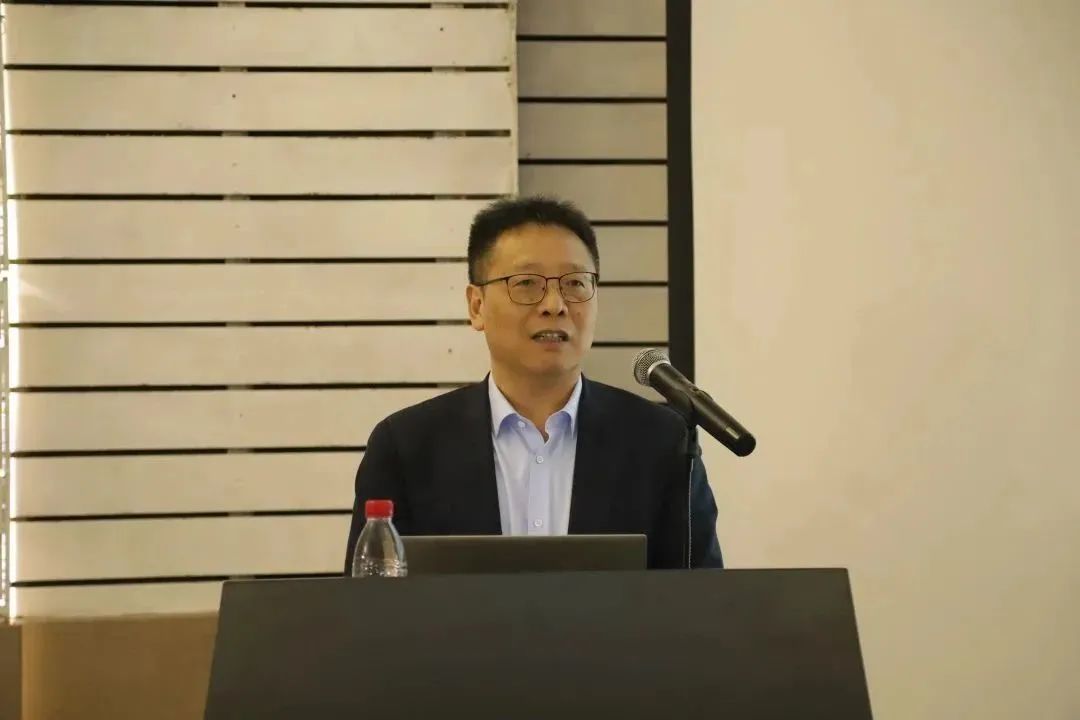
Prof. Zhang Lianhong
Nanking Safety Zone during the Nanjing Massacre
In late November 1937, on the eve of the Japanese breakthrough in the Battle of Nanjing, Minnie Vautrin, Wilson Plumer Mills, Miner Searle Bates, Lewis Smythe and other foreigners who stayed in Nanjing decided to provide shelter for Chinese refugees unable to flee. Following the example of Jesuit Father Robert Jacquinot de Besange in Shanghai, they set up the Nanking Safety Zone. They also formed the International Committee for the Nanking Safety Zone, electing John Rabe, a business representative of Siemens, as its leader.
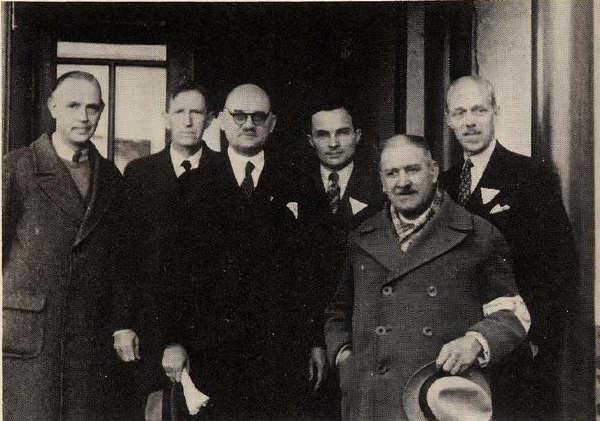
A group photo of some Western people staying in Nanjing: Ernest Forster (first from left), Wilson Plumer Mills, John Rabe, Lewis Smythe, Eduard Sperling, and George Ashmore Fitch
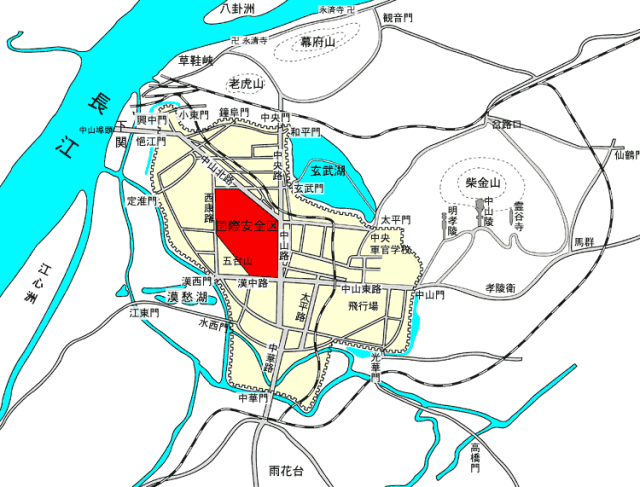
A map of the Nanking Safety Zone
The Nanking Safety Zone, also called the refugee zone, took in as many as 250,000 refugees at a time, Prof. Zhang said. More than 20 Europeans and Americans played a big role in protecting and saving refugees thanks to their special status as nationals of neutral states.
In fact, in addition to those foreigners, about 1,500 Chinese people also played a role in saving the refugees. Among them were managers and grassroots-level personnel at the International Committee for the Nanking Safety Zone, as well as personnel from the International Committee coordinating agencies. They risked their lives to support the refugees even if they suffered a lot.
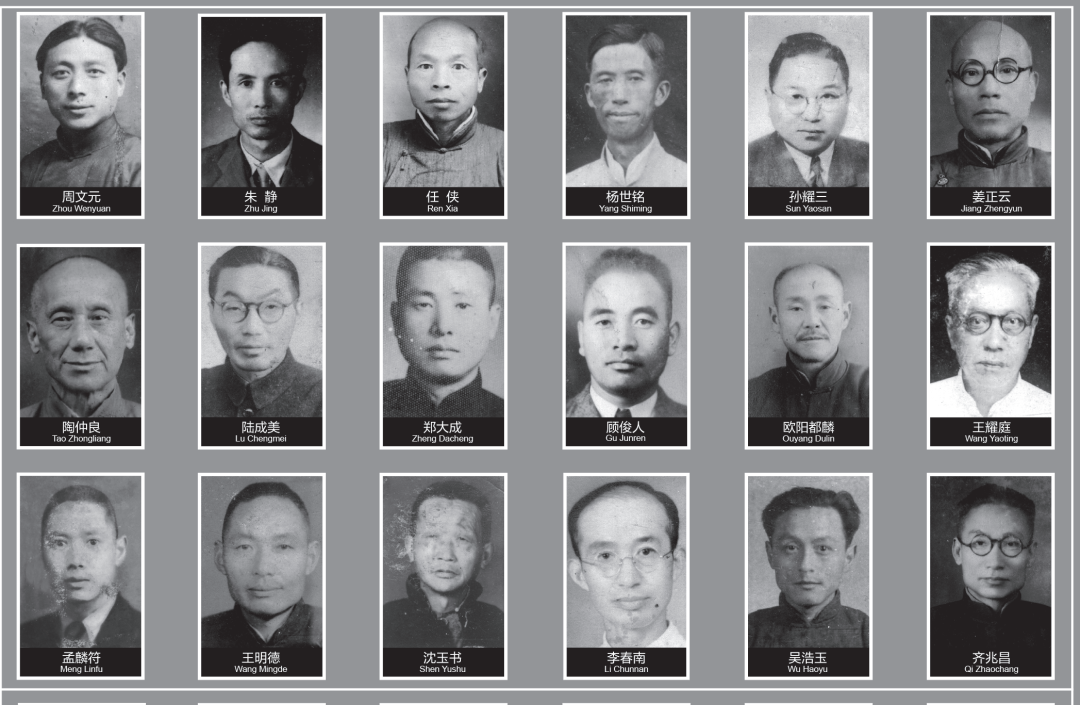
A group portrait of some Chinese people who helped save their compatriots
However, their stories had long been rarely mentioned, except in the diaries of Europeans and Americans who stayed in Nanjing when the Nanjing Massacre took place. It was not until the 1990s that their stories surfaced as more historical materials were discovered.
Chinese personnel working in the Nanking Safety Zone
On November 22, 1937, the International Committee for the Nanking Safety Zone was formed. Under the circumstances, committee members must be Europeans or Americans from a neutral state. In setting up the Nanking Safety Zone, Hang Liwu, chairman of the board of directors of Jinling University and secretary general of the China-British Culture and Education Fund, played a crucial role. He knew quite a few Europeans and Americans who stayed in Nanjing and also had a close relationship with senior officials of the Chinese government. That allowed him to act as a go-between.
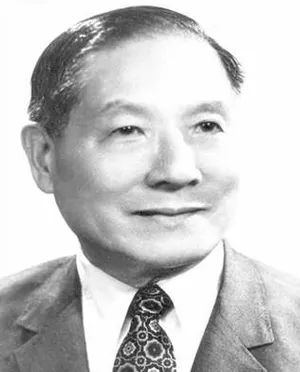
Hang Liwu
The International Committee for the Nanking Safety Zone consisted of a secretariat and commissions responsible for food, housing, health and transportation. Before the Nanking Safety Zone started operation, the International Committee pointed out a series of problems, the solving of which required active participation from Chinese personnel. And the Chinese personnel also played a very important role in facilitating follow-up work of the secretariat and the commissions.
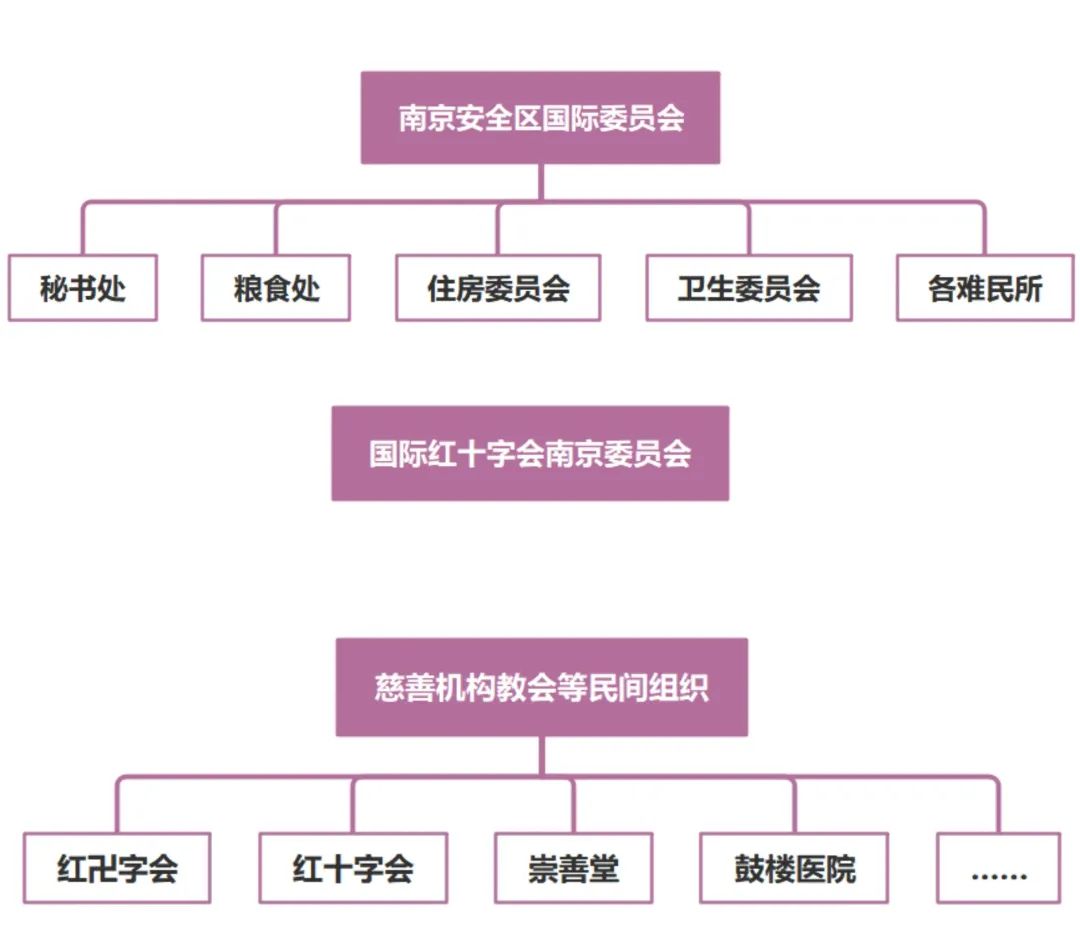
Institutions and agencies in the Nanking Safety Zone
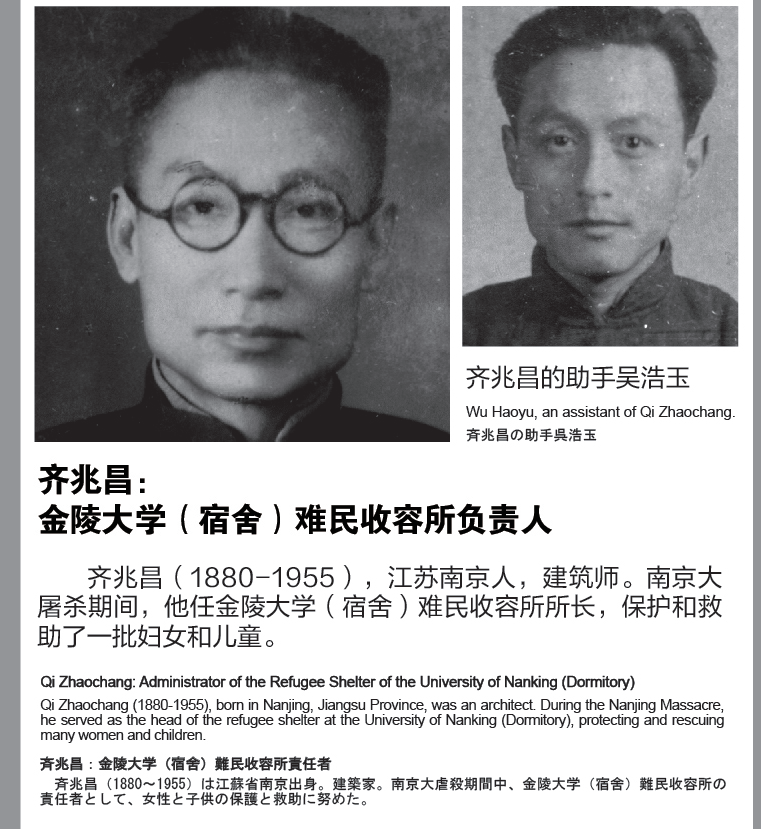
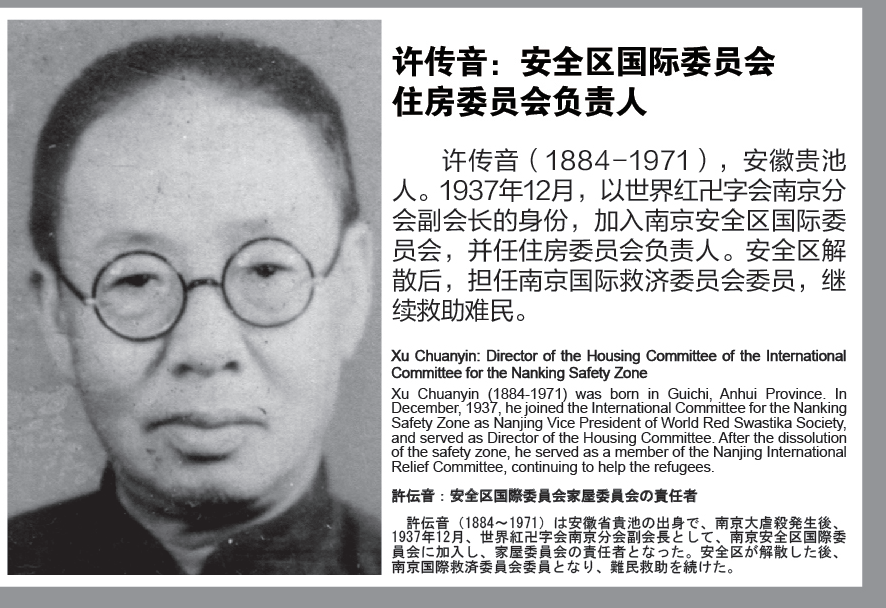


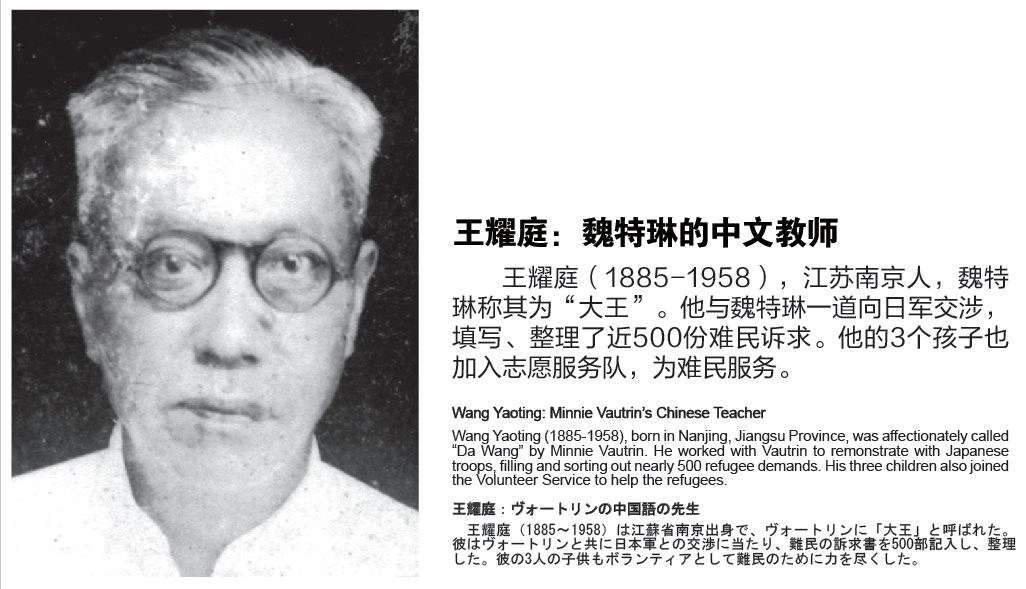
Some Chinese managers in main refugee camps
According to Prof. Zhang, Chinese managers had a very hard time. Unlike Europeans and Americans there, they didn’t have a “protective talisman” and often felt powerless because they couldn’t protect even themselves and their family.
Wang Yaoting was a senior language teacher in Nanjing. He was also the Chinese teacher of Minnie Vautrin. Some Europeans and Americans in Nanjing called him “the best teacher in China”. During the massacre, Vautrin ran hither and thither on campus to drive away Japanese soldiers, and went to the Japanese Embassy many times to lodge a protest. Wang usually accompanied her wherever she went. In Vautrin’s eyes, Wang played an immeasurable role in many situations. On December 17, 1937, his family was taken away by the Japanese soldiers and wasn’t released until the next day. With great sorrow and helplessness, his hair turned grey in just a few months.
Living in great terror, Chinese compatriots supported each other
In addition to Chinese personnel from management to grassroots level in the Nanking Safety Zone, ordinary Chinese people also joined the effort to provide humanitarian assistance during the Nanjing Massacre.
Saving Chinese soldiers
Wang Hengshan, a butcher, was among them. Wang was courageous and generous. He saved many injured Chinese soldiers and offered them food and even short-term jobs. After learning about the deeds of Wang, Kou Siming, secretary of the Nanjing Provincial Assembly, issued a statement in praise of him.
Saving and treating refugees
In early December 1937, more than 20 medical workers, including five Americans and some Chinese medical workers, stayed in the hospital even in a dangerous situation and did their best to treat and cure the refugees, making a major contribution to the medical work in the Nanking Safety Zone.
Numerous Chinese personnel from some private charities also played an indispensable role in saving the refugees. Over 80 persons from the Red Cross Society of China Nanjing Branch joined refugee relief efforts such as providing porridge, offering medical services, and burying the corpses of victims. A porridge kitchen, set up at Ginling College, offered food twice a day, from 8 to 10 in the morning and from 3 to 5 in the afternoon. It aimed to provide food for women, children and other refugees living at Ginling College. At its peak, more than 8,000 people received food a day.
The World Red Swastika Society Nanjing Branch set up an office, two porridge kitchens and two clinics in the Safety Zone to help and save the refugees, while assigning teams to help bury the corpses of Chinese victims.
Protecting refugees and recording the atrocities of Japanese troops
In 2001, a diary written by a Chinese who participated in the management of refugee camps in the Nanking Safety Zone was discovered. It talked about people’s life at Ginling College after Nanjing was seized. The woman was Cheng Ruifang, assistant of Vautrin and dorm supervisor at Ginling College. To protect and save tens of thousands of women, children and other refugees, Cheng, more than 60 years old then, risked her life and worked tirelessly to assist Vautrin in driving away the Japanese soldiers who frequently perpetrated crimes across the campus. Besides, Cheng also undertook onerous tasks such as keeping the campus clean, helping pregnant women give birth, and taking care of children. The diary is the only one of its kind found so far. As a Chinese, Cheng wrote what she saw and heard as well as her thoughts and feelings every day. “Cheng’s diary sheds much light on the social psychology of Nanjing victims during the Nanjing Massacre,” Prof. Zhang said.
Burying corpses
From late December 1937 to November 1938, the World Red Swastika Society Nanjing Branch, the Red Cross Society of China Nanjing Branch, charities like Chongshan Tang and Tongshan Tang in Nanjing, and Nanjing residents all helped bury the corpses of victims.
Recovering the lost history
Today most historical materials related to the Nanjing Massacre came from Westerners who stayed in Nanjing during that period, because they mostly kept diaries, letters, memoirs and all sorts of reports, Prof. Zhang said. However, many Chinese people didn’t keep diaries or reports about their experiences in Nanjing, resulting in a lack of important historical materials from Chinese people for the research on the history of the Nanjing Massacre.
February 21, 1938,in his farewell speech before he returned to Germany, Rabe expressed deep thanks to his Chinese friends, claiming that “your work, I am sure, will go down into the history of Nanking”.
However, the target of letting the work of those Chinese people go down into the history of Nanjing has proved hard to hit. After the victory of the Chinese People's War of Resistance Against Japanese Aggression, surveys were conducted across society to search for documents kept by Chinese people who stayed in Nanjing during the Nanjing Massacre. Newspapers like Nanjing Wen Xian also carried out some surveys. However, few documents were kept, except those kept by Xu Chuanyin, Guo Qi, Niu Xianming, Jiang Gongyi, Cheng Ruifang, Li Kehen, Lu Yonghuang, and Tao Xiufu.
Undoubtedly, Chinese people who risked their lives without hesitation and without expecting anything in return to protect and save victims in the Nanking Safety Zone during the Nanjing Massacre, were also heroes, just like Europeans and Americans who stayed in Nanjing.
For years, Prof. Zhang has made tremendous efforts to collect more information about Chinese people who worked in the Nanking Safety Zone during that period, including by searching for their descendants.
On December 9, 2021, Modern Express put out a notice to search for the descendants of Chen Feiran, who stayed in the Nanking Safety Zone to help the refugees.
“As historians, we have the responsibility and obligation to let their righteous acts be known by more people and truly go down into the history of Nanjing,” Prof. Zhang said.

Some visitors asked Prof. Zhang to autograph the gift book from the Memorial Hall after the lecture ended

